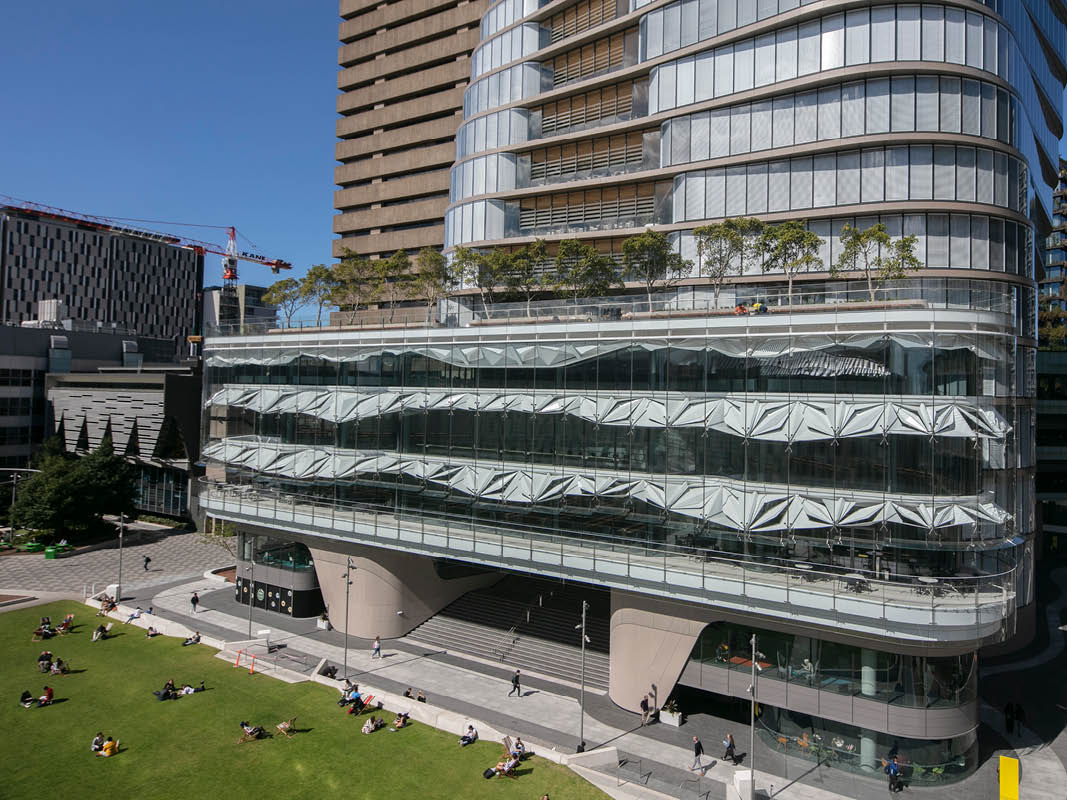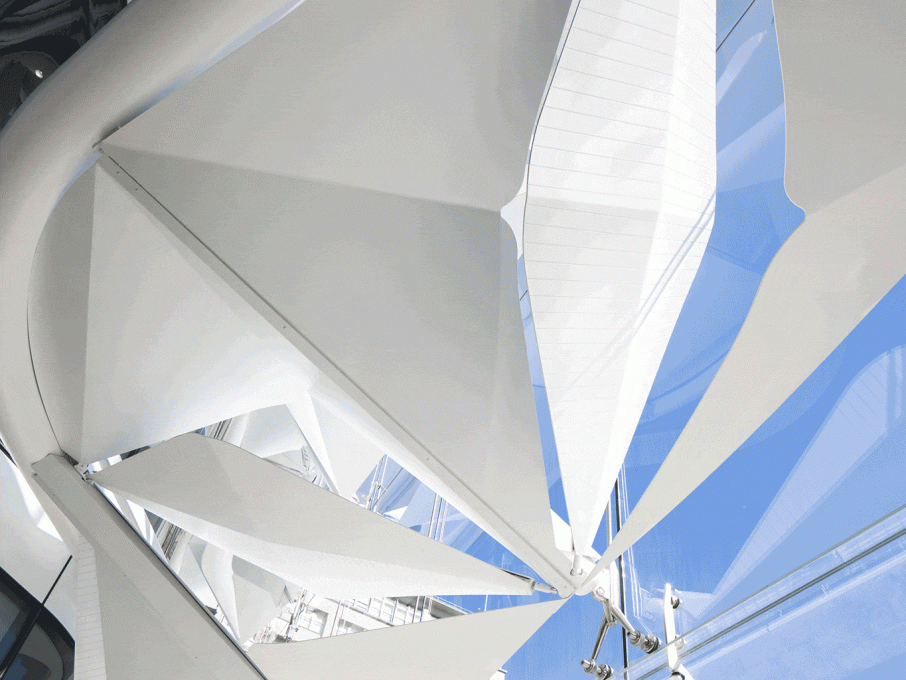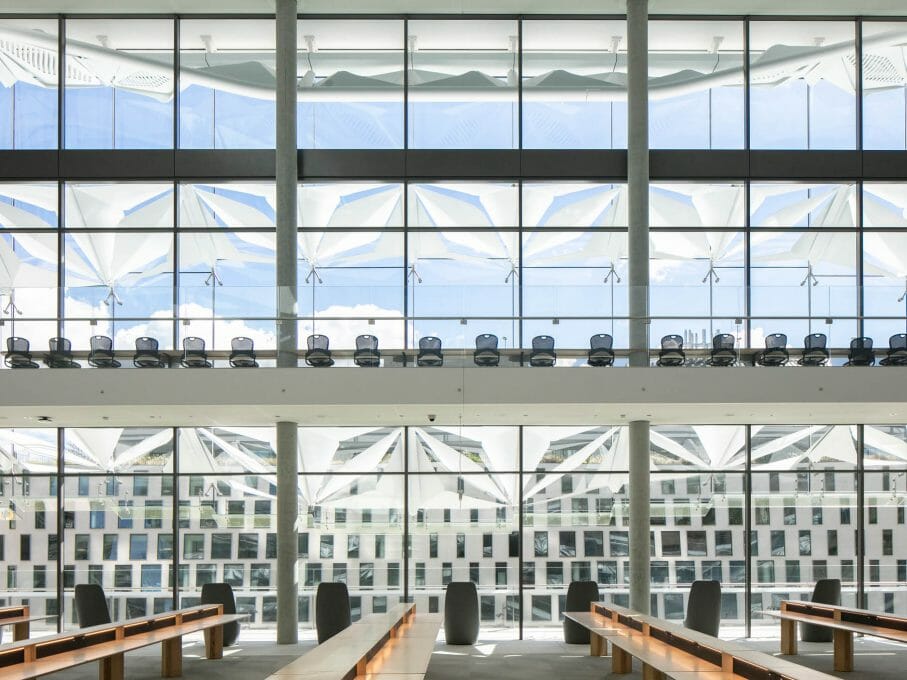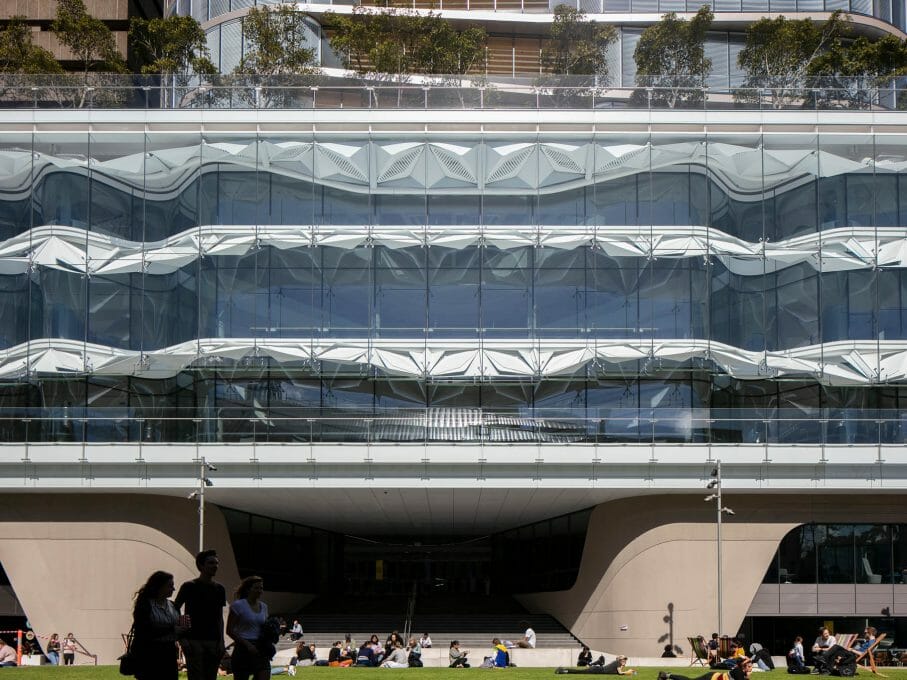-

-
UTS Central: An interview with the architect
Tilt collaborated closely with Principal, James Perry from fjmt to deliver the UTS Central sun shading system. We spoke to James about the project in detail, fjmt’s design intent, the benefits working with an industrial designer to deliver a technically complicated design and how the prototyping process provided confidence in the final outcome.
-
What was fjmt’s original concept for the sun shading system?
Before Tilt came on board, we actually had a building material called ETFE in place of the sun shading systemm (ETFE is Ethylene tetrafluoroethylene and is a fluorine-based plastic which can supplied as a series of pneumatic cushions made up of between two and five layers). Our idea was that this ETFE would provide and control the shading, but provide maximum transparency and therefore, light. We had several prototypes of the ETFE system made on site to test it however we soon realised the challenges with the material in this application.
We went through a fast-tracked process to test what alternatives existed and proposed to UTS a design option (using the geometry and patterns from the ETFE option) where a series of large custom profiled and operable aluminium louvres would replace the ETFE. This process of starting with the design concept of the ETFE and the resultant geometries and translating this to the proposed alternative led us to something completely unique that we could never have come up with starting from scratch.
Why Tilt?
One of fjmt’s Associate Principals, John Perry (no relation) and Rob Moisy from Surface Design (the facade engineers for UTS Central), had worked with Tilt previously. We started talking to Tilt once we had an idea about what we wanted to do with the operable louvres.
Tilt was engaged to undertake a concept design phase – where they worked with us, the builder Richard Crookes Construction, and UTS. This process took around six weeks and Tilt developed a workable concept based on what we’d documented.
We needed to find out if our idea was possible within the timeframe, what we could do and how we could expedite the process because we didn’t have much time.
During this phase, Tilt developed technical documentation that would enable the louvres to be manufactured. The documentation went out to tender and Tilt was unanimously the preferred choice.
As architects, Tilt’s value was in the way they translated our concept into a technically-sound approach. Quality for us was paramount. We hold our design intent to a very high standard, and Tilt delivered and installed our design with an equally high level of quality.
It was a very seamless process. Tilt understood what we wanted and how to technically deliver something that was very complicated from a design and delivery point of view and with very limited access for installation on site.
-
How did Tilt’s role fit in amongst contractors, consultants and sub-contractors?
When we initially came up with the idea of using aluminium-cut louvres made and installed in a fast time frame, there was concern from Richard Crookes Constructions about program and cost. Following discussions between Tilt, fjmt, Richard Crookes Constructions and UTS, Richard Crookes had confidence that we’d made the right decision. It was incredible. Essentially, we’d made a decision that helped the builders. I’ve since had Richard Crookes and the team on site tell me that having Tilt on board has been such a blessing.
Tilt are great operators, and by all working together seamlessly, we were able to effectively and quickly resolve a very complex design with a beautiful outcome that exceeded ours and UTS’ expectations.
What were the benefits of the prototyping process?
For us, it was critical that we had a prototype. It’s a huge benefit to be able to see the working prototype in 1:1 scale. It gave the team a lot of confidence that this was the right approach.
We spent time working with Tilt to develop several prototypes because it was important to get it right. We looked at how the mechanism worked, the rotations, repetitions and the cycle of rotations, amongst other things.
We found prototyping to be a highly valuable and effective exercise.
Whaat are the benefits of working with an industrial designer on a project like UTS?
It helped that we had a very clear design intent to begin with. What you see as the end result is what we had documented (in terms of the design, geometry and form).
Working with Tilt helped to resolve how we could technically deliver our design by providing a high level of engineering input and an understanding of the possibilities of fabrication and the most efficient and innovative ways of using aluminium.
It has been the seamless collaboration with Tilt and our team that has made the outcome such a success.
-
Latest news and insights
-
Enquiries
New business — studio@tilt-industrialdesign.com
Careers — studio@tilt-industrialdesign.com
Press & media — marketing@tilt-industrialdesign.com
We acknowledge the Traditional Owners of Country throughout Australia and their continuing connection to land, waters and community. We celebrate the value and diversity of First Nations art forms, cultures and languages, and their ongoing significance today. We pay respect to Elders past and present.


